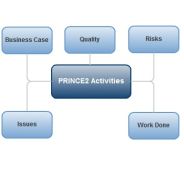Developing a Strategy for Managing Stakeholders: Stakeholder List and Stakeholder Analysis Matrix
 In the previous article we described two major steps for engaging key stakeholders in project implementation. Now we are going to talk on how to establish productive relationships with key stakeholders. We will focus on the main documents required for developing a strategy for managing stakeholders.
In the previous article we described two major steps for engaging key stakeholders in project implementation. Now we are going to talk on how to establish productive relationships with key stakeholders. We will focus on the main documents required for developing a strategy for managing stakeholders.
This article is a part of the Stakeholder Management Section of the Project Implementation Guide. It describes a stakeholder management strategy which is a proactive plan for keeping “positive” stakeholders satisfied while mitigating any risks and obstacles produced by “negative” stakeholders.
Stakeholder Register
First of all let’s clarify who positive stakeholders and negative stakeholders are.
- A positive stakeholder is a person, organization or/and group that either has a positive impact to the project, or is positively affected by the project. Such stakeholders are usually interested in delivering the project on schedule and within budget because they want to derive some benefit from the successful project’s completion. The project sponsor and strategic partners are examples of positive stakeholders.
- A negative stakeholder is a person, organization or/and group that either has a negative impact to the project, or is negatively affected by that project. As a rule, negative stakeholders are not interested in successful project completion yet they may look for ways to produce some obstacles and increase the risk of failure. For example, a competitor and monopolistic supplier can be examples of negative stakeholders.
The project manager’s task is to divide all the stakeholders into these two groups. This person needs to analyze expectations, benefits and interests of each involved party and then make a decision. When all the stakeholders have been identified, the appropriate input information should be added to a stakeholder register (also know as a stakeholder list) – a formal document that covers all the stakeholders and their details including name, position, title, contact information and other characteristics. The stakeholder register also documents expectations, interests and influence to the project. All the records in the stakeholder list should be shared between the interested parties for reviewing and approval. Once this document is designed and approved, it won’t be changed during the entire project implementation process.
The stakeholder list is the primary document used in developing a strategy for managing stakeholders. The document also serves as an efficient tool for making decisions on engaging stakeholders in project implementation. It specifies the link between the stakeholders’ commitment/input and ways for communicating. The document contains the following information:
- Name, title, position, company, and contact information of each stakeholder involved in the project.
- Reporting relationships between the stakeholder and other people.
- The stakeholder’s major interest in the project.
- Level of involvement (Collaborator, Giver, Gather, Consultant).
- Access level to the appropriate project information.
- Methods and frequency of communication.
Strategy for Managing Stakeholders
A stakeholder management strategy is a detailed plan of actions that defines an approach for improving the relationships with the key stakeholders through increasing the support of positive stakeholders and minimizing any impacts of negative stakeholders throughout the entire project implementation process.
The project manager takes responsibility for developing such a strategy. This person needs to consider the level of involvement per stakeholder and add appropriate records to the stakeholder list. There are four levels of stakeholder involvement including:
- Collaborator: the most involved and influential stakeholders become project collaborators or partners that provide joint efforts and participate in strategic decision making.
- Consultant: for stakeholders who are highly interested in the project but have no direct authority to influence it, the role of consultants and experts will be assigned. The project manager can request consultants on expert advice and seek for their opinions.
- Giver: those stakeholders having an impact to the project but less interested in the implementation, the role of givers will be assigned. Such stakeholders will provide necessary information to the project and receive some feedback.
- Gatherer: to stakeholders with low interest and low power the project manager assigns the lowest involvement level. Such stakeholders can only monitor and trace the project by receiving infrequent and filtered information. They have no authority to request changes to the project.
Considering the four levels of involvement the project manager can develop a stakeholder analysis matrix. Such a matrix is a combination of the levels and expectations of influential stakeholders to show what position and role within the project each interested party takes.
Both the stakeholder register and stakeholder analysis matrix are used as the input data for developing a strategy for managing stakeholders. Such a strategy becomes successful when it regards both positive and negative stakeholders as partners and paves the way for establishing collaborative rapport based on a shared understanding of the project goals, open communications, and straightforward information sharing.
During the project implementation process the stakeholder management strategy is not changed. The project manager needs to use a selected approach in managing stakeholders. This approach is defined by the stakeholder register and stakeholder analysis matrix. The art of managing project stakeholders consists in identifying the best way for combining stakeholder interests and resources into a single framework that lets implement the project on time and within budget.














